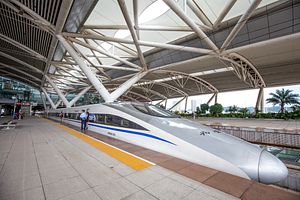Chinese Premier Li Keqiang hosted 16 European leaders in Suhzou on Tuesday and Wednesday, for the fourth China-Central and Eastern Europe (CEE) summit. The format, which held its first summit in 2012 in Warsaw, Poland, brings together leaders from China and 16 Central and Eastern European states: Albania, Bosnia and Herzegovina, Bulgaria, Croatia, Czech Republic, Estonia, Hungary, Latvia, Lithuania, Macedonia, Montenegro, Poland, Romania, Serbia, Slovakia, and Slovenia. While this was the fourth annual meeting in the “16+1” format, it was the first to be held in China. Chinese media described the meeting as a “golden opportunity” to deepen cooperation.
For China, Central and Eastern Europe represents its “bridge to Europe” (although individual countries in the region might vie over holding that title for themselves). That’s true in both a political and logistical sense. Diplomatically, China hopes that building up better relations with the CEE states, most of whom are also members of the European Union, can help push forward its overall relations with the EU. Logistically, meanwhile, Central and Eastern Europe will play a crucial role in making sure China’s “Silk Road Economic Belt” reaches its final destination: Western Europe.
As Li put it in his remarks at the summit, “Located at the east gateway to Europe and along the routes of the Belt and Road initiative, CEECs enjoy a distinct advantage for enhancing connectivity.” China wants to work with these states “to build the China-Europe land-sea express line and promote connectivity in Europe.”
With that in mind, it’s no surprise that the China-CEE summit placed a heavy emphasis on infrastructure building. Xinhua, in its summary of the summit, even spoke of “infrastructure-led all-round cooperation” between China and the CEE states. Although it’s received far less attention than China’s offer to build up infrastructure at the other end of the “Belt and Road” (in Central and Southeast Asia, for example), China is also making a bid to help construct railways, roads, and ports in Europe. Li even took the 16 visiting state leaders on a high-speed train ride to demonstrate China’s capabilities.
The main deals that came out of the summit, and the various bilaterals held on the sidelines, were also related to infrastructure. China signed deals with both Hungary and Serbia to build a high-speed rail line between their respective capitals, Budapest and Belgrade, a project first discussed in 2013. Li said that construction will begin before the end of the year, and is slated to be completed by 2017. Xinhua described the new railway as “a fast lane for [the] import and export of products between China and Europe.”
The Hungary-Serbia high-speed railway will be just one part of a larger project, the “land-sea express passage” linking China and Europe that Li mentioned in his remarks. According to a statement from the Chinese government, “This express passage extends from the Piraeus Port of Greece in the south to Budapest of Hungary in the north via Skopje of Macedonia and Belgrade of Serbia.” Though Greece is not part of the China-CEE summit, leaders from the other three European state on the route – Hungary, Macedonia, and Serbia – met with Li and agreed to work together on the project.
Li also announced that China will invest in constructing and upgrading port facilities in the Baltic, Adriatic, and Black Seas. While he did not name any specific ports, Li said that “Croatia, Slovenia, Poland, Latvia and Bulgaria have proposed to strengthen cooperation on port development.” The projects will focus on “production capacity cooperation among the ports and industrial parks of the coastal areas of the Adriatic Sea, the Baltic Sea and the Black Sea,” Li said, adding that China expects “our companies to be the main players in these projects.”
That seems to be a condition for projects to receive Chinese financing. “China will provide preferential financing support for those [projects] that use Chinese products and equipment in production capacity cooperation,” Li said. He also proposed creating a new “16+1 finance company” specifically to financially support such projects “through business means” – thus avoiding violating EU restrictions on sovereign debt.
Many of the CEE states are hoping to use Chinese investment to boost their own economies. Vazil Hudak, Slovakia’s minister of economy, told Xinhua that the scope for cooperation is broad: “The whole region could be interested in larger infrastructure projects like communication, transport or some energy infrastructure between these countries, meaning gas pipelines.”

































